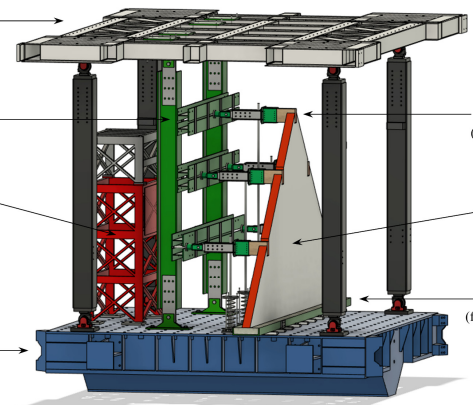Nicolò Damiani, Satyadhrik Sharma, Marta Bertassi, Marco Smerilli, Michele Mirra, Igor Lanese, Elisa Rizzo Parisi, Gerard J. O’Reilly, Francesco Messali, and Francesco Graziotti
i Postdoctoral Researcher, University of Pavia, Pavia, Italy, nicolo.damiani@unipv.it
ii Researcher, Delft University of Technology, Delft, The Netherlands, s.sharma-9@tudelft.nl
iii PhD Candidate, University School for Advanced Studies IUSS Pavia, Pavia, Italy, marta.bertassi@iusspavia.it
iv EUCENTRE Foundation, Pavia, Italy, marco.smerilli@eucentre.it
v Postdoctoral Researcher, Delft University of Technology, Delft, The Netherlands, m.mirra@tudelft.nl
vi EUCENTRE Foundation, Pavia, Italy, igor.lanese@eucentre.it
vii EUCENTRE Foundation, Pavia, Italy, elisa.rizzoparisi@eucentre.it
viii Associate Professor, University School for Advanced Studies IUSS Pavia, Pavia, Italy, gerard.oreilly@iusspavia.it
ix Assistant Professor, Delft University of Technology, Delft, The Netherlands, f.messali@tudelft.nl
x Associate Professor, University of Pavia, Pavia, Italy, francesco.graziotti@unipv.it
ABSTRACT
Typical low-rise masonry buildings worldwide commonly feature unreinforced masonry (URM) walls, often paired with various pitched roof configurations supported or finished by masonry gables. These buildings constitute a significant portion of the building stock in several seismic-prone regions, including areas vulnerable to both natural and induced seismicity. Masonry gables in such buildings are frequently associated with high seismic vulnerability, as evidenced by damage observed after past earthquakes. This paper presents key results from an experimental campaign aimed at enhancing the understanding of the seismic out-of-plane response of masonry gables. Incremental full-scale shake-table tests were performed on three densely instrumented URM gables until the complete collapse. Within this context, the study systematically investigated the effects of motions applied at the top of the gable, both being linearly amplified as well as amplified and out-of-phase, with respect to the motion applied at the base of the gable. Such differential motions simulate the effect of the gable interaction with three different roof configurations, each exerting a different filtering effect on the seismic motion. The response of the gables to both induced and tectonic earthquakes was considered. The experimental findings are presented in terms of failure mechanisms, force-displacement hysteresis behaviour, and acceleration and displacement capacities. All generated experimental data, along with the associated instrumentation schemes, are openly available for download at https://doi.org/10.60756/euc-1avy7q49.
KEYWORDS: Collapse, Gable walls, Roof stiffness, Shake-table tests with differential input motions, Out of plane, Unreinforced Masonry.
181-Damiani.pdf



